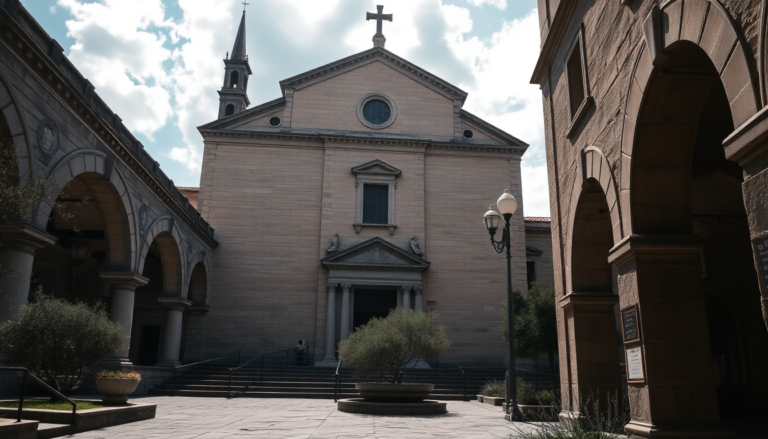Argomenti trattati
In the heart of Naples, nestled among the ancient stones of the monumental complex of Santa Maria la Nova, lies a captivating secret that might just rewrite a chapter of European history: the potential burial site of the real Dracula. As you wander through this vibrant city, steeped in history, the whispers of a legendary past come alive, weaving together the notorious Vlad III of Wallachia with Italy’s rich tapestry of heritage. Could this be just another tale, or is there more to uncover?
Vlad III: The Man Behind the Legend
Born in 1431 and meeting his end in 1477, Vlad III, famously known as Vlad the Impaler, is often remembered for his brutal reign and fierce resistance against the Ottoman Empire. His chilling nickname comes from the horrifying punishment methods he employed against his enemies, which have been immortalized in countless tales and folklore. But it was Irish writer Bram Stoker who truly transformed this historical figure into the iconic Count Dracula in his 1897 gothic horror novel. This literary twist forever linked Vlad’s legacy to the eerie world of shadows and fear. Isn’t it fascinating how a story can shape history?
Despite his infamous reputation, the exact location of Vlad’s burial has long remained a mystery. While some theories suggest he died in battle and was interred in his homeland, another intriguing narrative has emerged over the past decade: could Dracula actually be resting in Naples? This theory has sparked curiosity and speculation among historians and enthusiasts alike. What if the truth is stranger than fiction?
Unraveling the Mystery at Santa Maria la Nova
In 2014, a group of Italian scholars, in collaboration with experts from the University of Tallinn, proposed a tantalizing idea: Vlad III’s remains might be located within the Turbolo Chapel of the angioino-aragonese complex at Santa Maria la Nova. This tomb boasts unique decorations, including a dragon and symbols of Egyptian origin—elements that are quite unusual for a Renaissance burial site and hint at a deeper, perhaps more mystical history. What stories do these symbols whisper?
The plot thickened in 2025 when a mysterious funerary inscription, possibly dating back to the 1500s, was deciphered from this very tomb. Professor Giuseppe Reale, the director of the complex, revealed that the inscription appears to be a eulogy dedicated to none other than Vlad the Impaler. This groundbreaking discovery could solidify the notion of Vlad’s presence in Naples, inviting further exploration into this enigma. Isn’t it thrilling to think about what lies beneath the surface of these historic sites?
The Benevolent Connection: Maria Balsa
One of the most captivating aspects of this theory involves Maria Balsa, who is believed to be Vlad III’s daughter. Scholars speculate that she was adopted by a noble Neapolitan family while her father was imprisoned by the Turks. In a remarkable twist of fate, Maria is said to have redeemed her father and brought him to Naples. Following his death, she allegedly arranged for his burial in the tomb of her father-in-law, Matteo Ferrillo, situated within the Turbolo Chapel. This familial connection prompts us to ponder the ties that bound Italy and Eastern Europe during the late Middle Ages. How many stories like this remain untold?
If confirmed, Dracula’s burial in Naples would not only reshape the narrative surrounding this enigmatic figure but also illuminate the historical links between these two regions. The site of Santa Maria la Nova, already rich with history, could transform into a focal point for historians, tourists, and curious minds from around the globe. Are you ready to explore this fascinating intersection of history and legend?
The mystery persists, yet the clues increasingly suggest an extraordinary truth: Dracula may indeed rest under the sun of Naples, a world away from the fog-laden Carpathians. What other secrets might this vibrant city be hiding?

